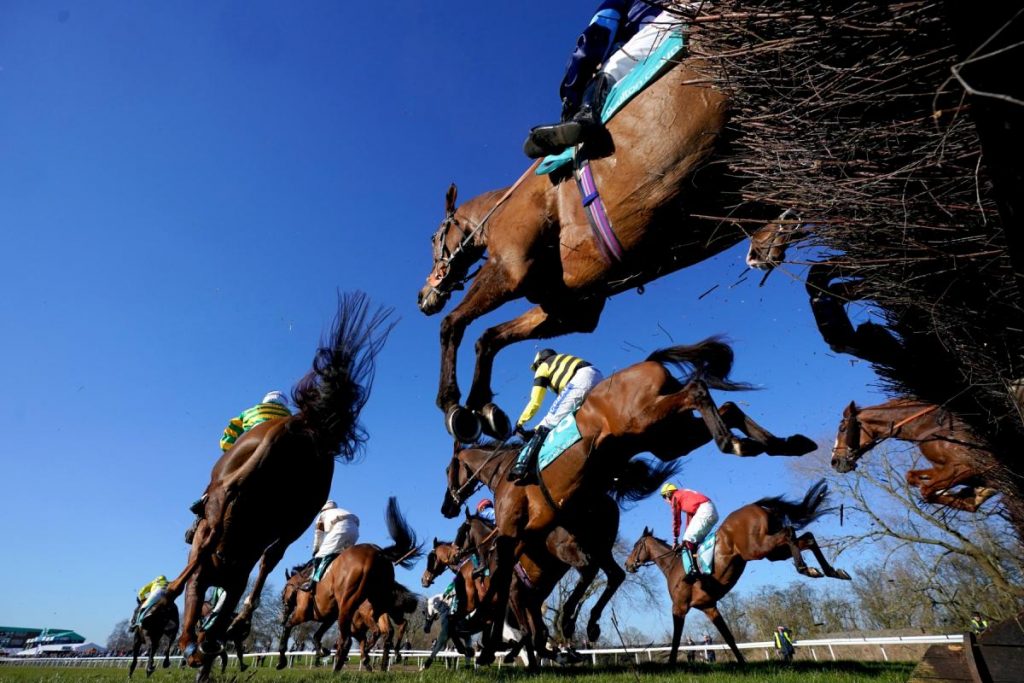Why terrestrial coverage is crucial for horse racing
April 10, 2024

Horse racing is a sport that some would argue is in decline, as it has struggled to attract new fans into the sport. Others would suggest otherwise, citing that the sport continues to flourish, with millions tuning in each year to big events such as the Cheltenham Festival, Derby and Grand National.
One thing is for certain; the sport’s terrestrial coverage is vital. ITV Racing currently have the rights to action in the UK, and that will continue until the current deal concludes in 2026. Here is a look at why terrestrial coverage is so important for horse racing.
Big Events Are Broadcast to a Wide Audience
Galopin Des Champs wins the Boodles Cheltenham Gold Cup!
@CheltenhamRaces redemption!#ITVRacing | #CheltenhamFestival | @WillieMullinsNH | @PTownend pic.twitter.com/89qqOTJjhE
— ITV Racing (@itvracing) March 17, 2023
The 2024 Cheltenham Festival was broadcast on ITV Racing across the four days this year, and an average of 953,000 watched each day’s coverage of the event. On the final day, 1.59 million tuned in to see Galopin Des Champs win his second Cheltenham Gold Cup. The Irish horse is 3/1 in the betting on sports to complete his hat-trick in 2025, and the sport’s organisers will be hoping that helps attract an even bigger audience. The betting guides on horse racing show that during the biggest races of the year, like the Cheltenham Gold Cup, Champion Hurdle and Champion Chase, there is a wider interest in horse racing fans placing a bet. These races attract the best horses in the sport, the most written previews and they are often competitive races.
Having terrestrial coverage on ITV Racing showcases the best of the sport. If new fans happen to land on ITV Sport during one of the biggest meetings of the year, they may enjoy watching and tune in again to future events.
Dubai World Cup and Breeders’ Cup Now on ITV Racing
ITV Racing decided to broadcast the latest renewals of the Dubai World Cup and Breeders’ Cup Championship. These are two of the biggest events on the international calendar.
Laurel River bolts up in the Dubai World Cup! pic.twitter.com/ghrT2mxCSB
— At The Races (@AtTheRaces) March 30, 2024
The Dubai World Cup took place earlier this year in March and it was won by Laurel River. The US-trained horse produced a mesmerising performance at Meydan Racecourse in the UAE. UK viewers were able to see the colt blow his rivals away in the lucrative contest. Last November, ITV Racing also showed both days of the Breeders’ Cup Championship from Santa Anita in California. This meeting is considered the world championship in the sport, with the leading runners from the UK, France and Japan all travelling to the USA to take on their North American counterparts.
Without terrestrial coverage, these events would be behind a subscription channel in the UK, with only dedicated horse racing fans tuning in.
Technology Used to Improve Coverage
To appeal to a new audience, horse racing is now using a wide range of technology at their racecourses, such as drones, headsets on jockeys’ helmets and social media content to improve the coverage of their events. These have all helped improve the access fans now get to the sport, as they provide a unique insight into what the horses and jockeys go through in a race.
With a fly-on-the-wall docuseries planned to launch later in 2024 in the same style as Drive To Survive in F1, horse racing organisers will be hoping they can showcase further what is great about their sport.
Like all sports, horse racing needs to continue to evolve to stay relevant, and as long as it has terrestrial support, it will have a platform to shine on.
